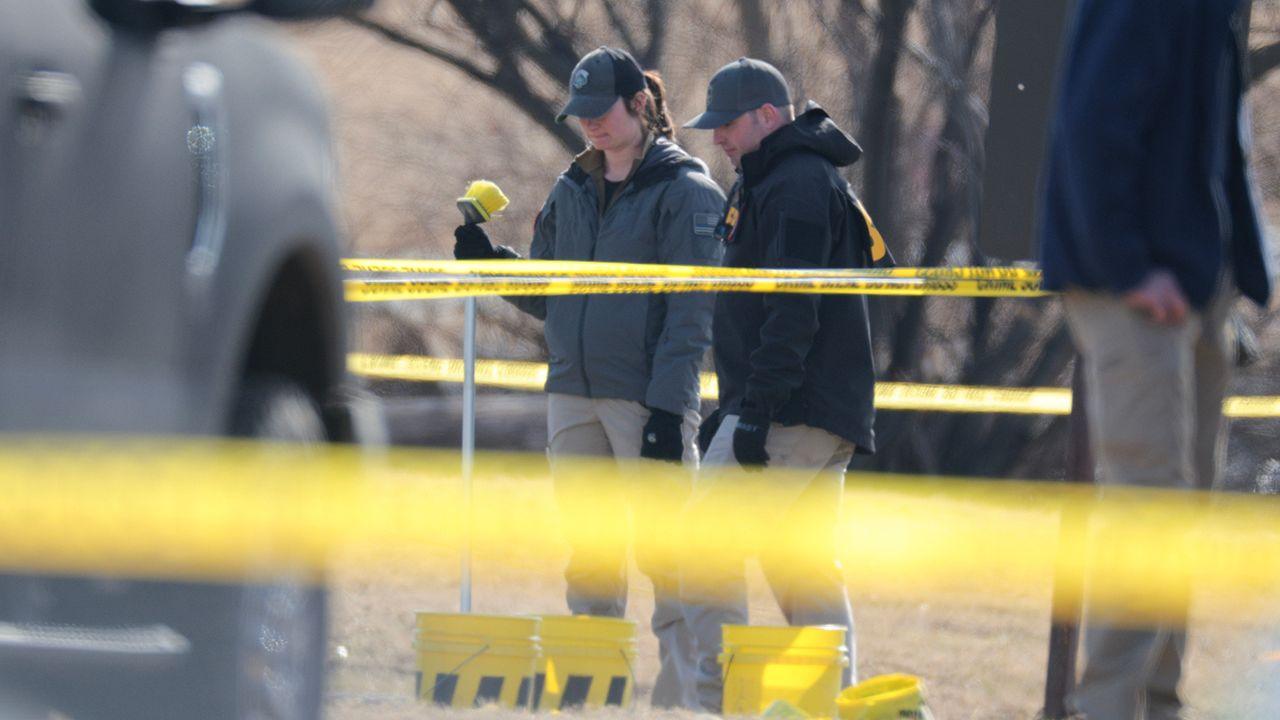Helicopter in deadly DC airport collision had faulty altitude gauge, NTSB says
Watch: NTSB presses US Army at hearing into mid-air collision
- Published
Investigators have found the Army helicopter involved in a deadly mid-air collision over Washington DC was receiving faulty altitude data, causing it to fly higher than intended.
The findings, revealed during a National Transportation Safety Board (NTSB) hearing, indicate that the helicopter's altimeters - devices that tell pilots how high off the ground they are - showed discrepancies ranging from 80ft (24.4m) to 130ft.
All 64 passengers and crew onboard an American Airlines flight, along with three crew on the helicopter, were killed in the 29 January crash.
Investigators are not expected to identify the cause of the crash at the hearing but will present insights into what led to the tragedy.
"We are working diligently to make sure we know what occurred, how it occurred and to prevent it from ever happening again," NTSB chairwoman Jennifer Homendy said, at the opening of the three-day hearing on Wednesday.
Families of the crash victims attended the hearing, some wearing pictures of their loved ones around their necks or on buttons.
Tim Lilley, whose son Sam was the plane's first officer, told CBS News, the BBC's US partner, that he hopes the hearing will help him learn more about the final moments.
"I know that my son saw that helicopter one second before impact, and they tried very hard to avoid it," Mr Lilley said.
"Sam was a good pilot, and he would have been trying to fly that aircraft all the way, all the way to the bottom."
The first day of the hearing has focused on the military helicopter's altimeter, performance and navigation systems.
It also played a video animation that showed how the helicopter was flying above the maximum permitted height of 200ft (60m) for nearly the entirety of its route along the Potomac River.
Investigators said the flight data recorder suggested that Black Hawk's barometric altimeters, that measure height, showed the pilot that the aircraft was flying 80 to 130ft lower than its actual altitude.
"There is a possibility that what the crew saw was very different than what the true altitude was," NTSB Chairwoman Homendy said.
Army officials at the hearing said that discrepancies of up to 100ft were not a cause for alarm in the helicopter because pilots are expected to maintain their altitude plus or minus 100 ft.
The greater concern, they said, was that Federal Aviation Administration (FAA) approved routes around Reagan National airport had insufficient vertical separation distances between helicopters and planes while landing.
"In my opinion, the amount of clearance between the helicopter route and potentially the aircraft passing over top of it was concerning," said Kylene Lewis, an Army helicopter test pilot.
BBC Verify analyses the moments before the Washington DC plane crash
In March, NTSB chairwoman Homendy too had stated that the separation between helicopters and jets in the area was insufficient, raising the "chances of a mid-air collision".
Data used by the NTSB for their preliminary report shows that the proximity between helicopters and aircrafts have triggered at least one alert per month between 2011 and 2024.
The Reagan National airport, located just outside Washington DC, is one of the busiest in the US, with nearly 400 daily flights to 98 destinations.
On Wednesday, the NTSB also released nearly 10,000 pages of evidence, including transcripts of the cockpit recordings from both American Airlines aircraft and the Army Black Hawk, and of air traffic control transmissions to all aircraft in the area.
It played audio excerpts of communications between air traffic controllers during the minutes before the crash, including a request to the American Airlines plane to shift to a different runway.
The transcript shows that as the pilots approached for landing, they had a visual on runway one when air traffic controllers asked them to take runway 33 instead.
The pilots discussed it between themselves, with one saying, "I really don't want to but I guess…," then said, "it's fine," adding, "tell 'em we're fine we'll do three-three, we'll do it."
Over the next two days, the NTSB will call on additional witnesses, including control‑tower personnel, FAA officials, and Army aviation leadership.
The final report on the cause of the mid-air collision is expected to be issued by January 2026, one year on from the crash, with potential policy recommendations.
- Published31 January
